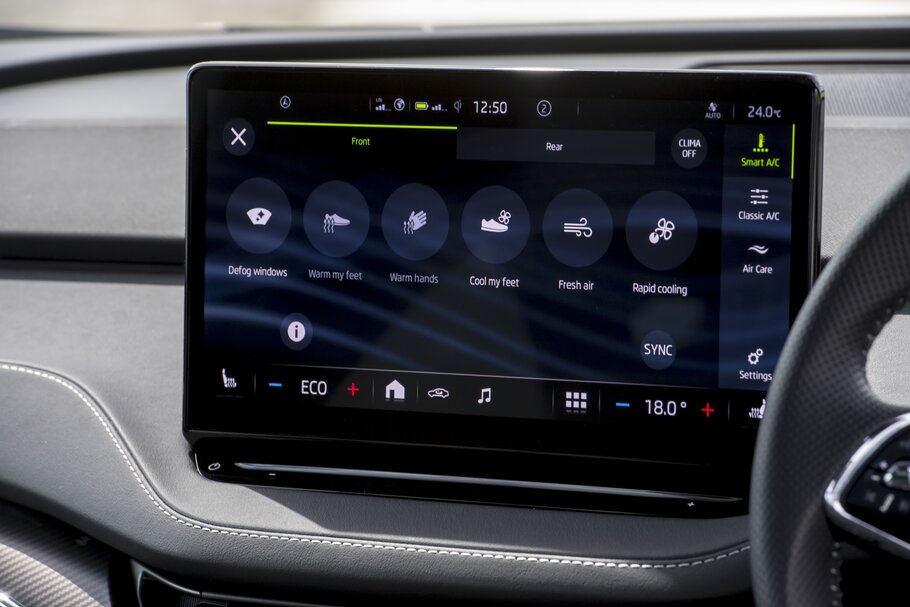
Nearly 50% of the adult population in the UK suffer from hay fever symptoms, according to charity Allergy UK. With the warmer weather here and pollen counts high, it can be an unpleasant time of year for many experiencing sneezing fits, watery eyes and tickly throats. It can have an influence on driving too, as at just 30mph a sneeze can leave a driver blind for around 30 metres, meaning exposure to pollen and particles in the air can have serious impacts on safety behind the wheel.
This problem can be automatically remedied, and a healthier cabin environment created, via the Climatronic Air Care System in ŠKODA cars. Using a suite of sensors, it monitors air quality and, if necessary, responds by automatically activating the air recirculation function if pollutant levels are rising. The cabin air filters in most current ŠKODA cars, such as the ENYAQ iV, OCTAVIA, KAROQ and KODIAQ, are also crucial for clean air in the interior. These perform three functions simultaneously catching fine dust particles, preventing allergens from entering the interior, and absorbing unpleasant odours.
The hay fever season lasts until September, with spells of tree, grass and weed pollen increasing. Through effective interior filters and intelligent air conditioning, the Climatronic with Air Care System keeps ŠKODAs free of the majority of pollen and fine dust particles year-round. The technology helps increase safety for allergy sufferers and fellow road users, as well as improving comfort for occupants who might have breathing difficulties, and especially those that are sensitive to such issues and children.
Air Care system uses sensors for air quality and humidity
The Climatronic with Air Care System, available either as standard or as an option across the majority of the current ŠKODA range, uses an array of sensors to measure interior and exterior temperatures, interior air quality, humidity and even the temperature of the windscreen.
Should excessive air pollution be detected, the air recirculation function is automatically activated, preventing contaminated air from entering the vehicle while cleaning internal air via recirculation. During this circulation process, the air passes through a highly effective activated carbon cabin filter. Not only does it remove small particles from the air flow, but pollen and even unpleasant odours are also absorbed.
To prevent the windscreen misting up, an air conditioning compressor is activated automatically above freezing temperatures, directing air to the windscreen and windows. If the cabin needs to be dehumidified, ventilation is intensity is increased – circulating air repeatedly through a highly efficient filter system.
Three different cabin filters in use
ŠKODA uses three different cabin filters in its vehicles. In addition to the basic version for the entire ŠKODA model range, the manufacturer uses an activated carbon filter that, in as well as offering the highest filter capacity, also absorbs unpleasant odours. The third version is a filter capable of removing allergens.
Regularly changing the filters increases the effectiveness
To ensure that the filtration remains highly effective, cabin filters should be replaced every 18,000 to 36,000 miles. An ideal time to replace the filters is in spring or early summer so the system is optimally prepared for the first pollen.
At the same time as replacing the filter, it is also a good idea for motorists to check the functioning of their air conditioning ahead of the warmer summer temperatures.
Previous article
Ami 100% ëlectric available from Just £19.99 per month



